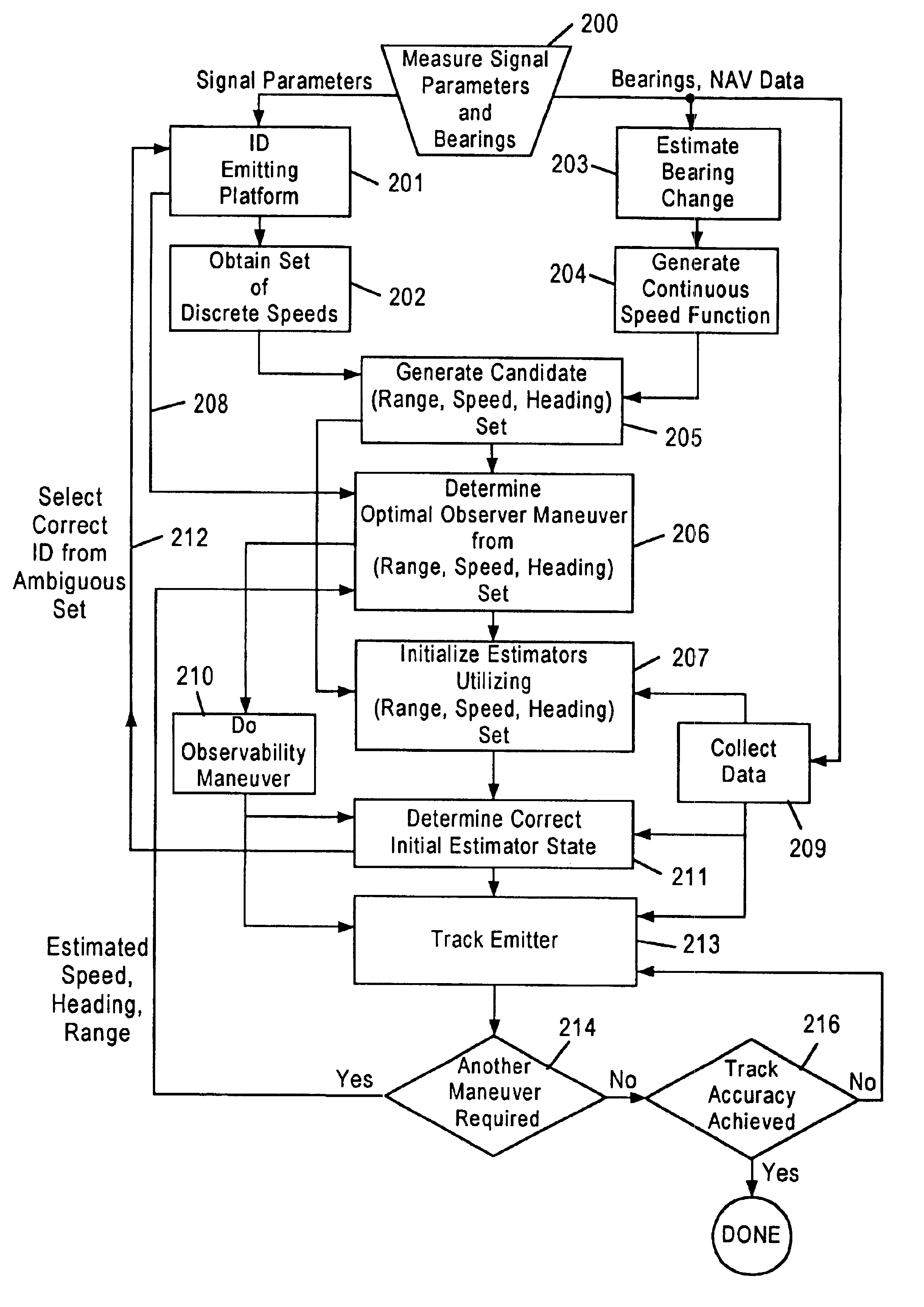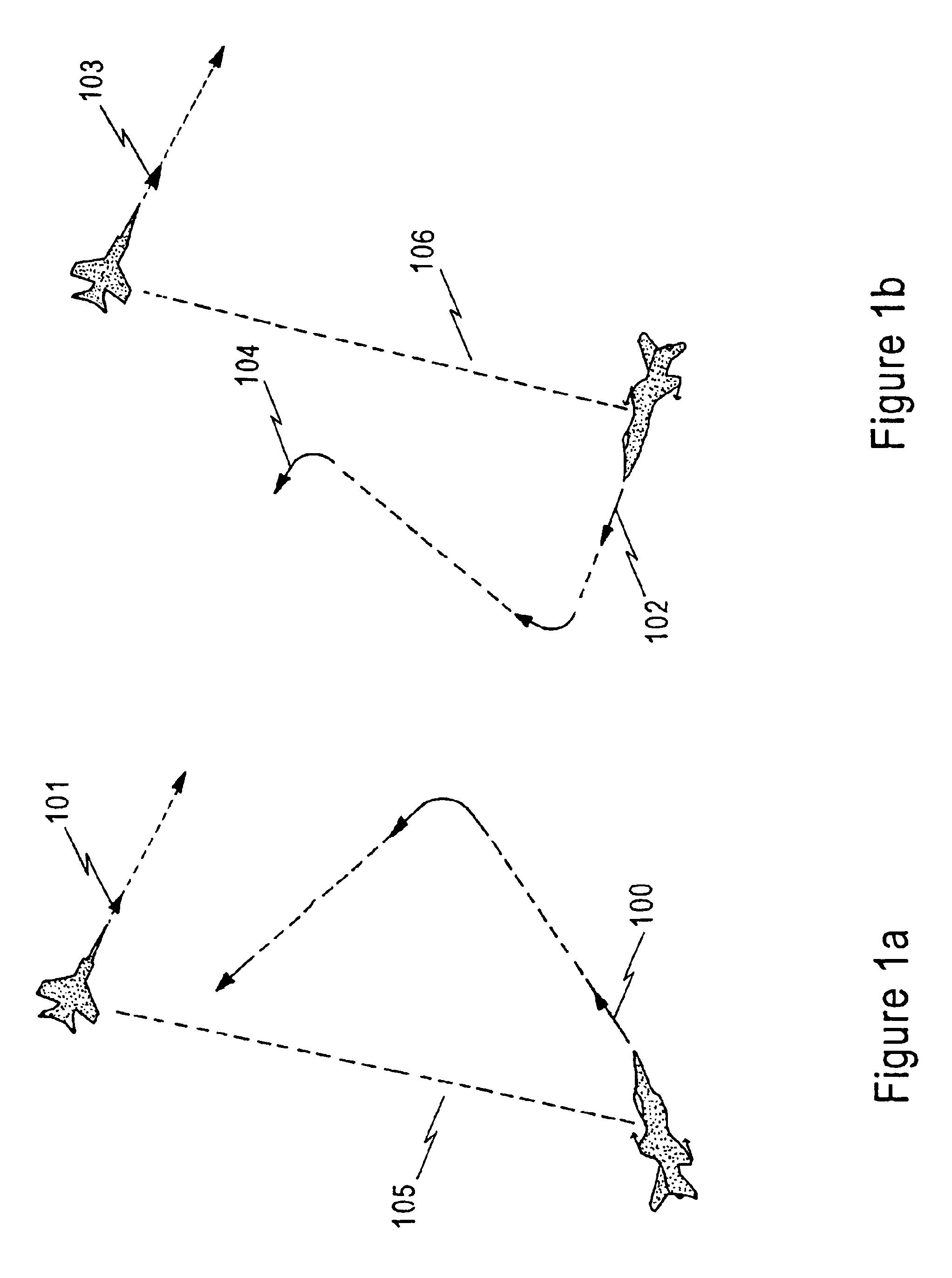Method for determining the optimum observer heading change in bearings-only passive emitter tracking
a passive emitter and bearing technology, applied in direction finders, instruments, communication jamming, etc., can solve the problems of inconvenient convergence, large risk, intrinsically less accurate passive emitter tracking or ranging, etc., and achieve the effect of improving performan
- Summary
- Abstract
- Description
- Claims
- Application Information
AI Technical Summary
Benefits of technology
Problems solved by technology
Method used
Image
Examples
Embodiment Construction
A logic flow chart of an embodiment of the present invention is depicted in FIG. 2. Process steps 200 through 205 occur prior to the observability maneuver in step 210.
Steps 200-205 are similar to the steps described in the inventor's copending application with a key difference. Unlike the aforementioned disclosure, the signal parameters extracted in step 200 are not required to uniquely or nearly uniquely identify the platform type in step 201. Hence, a large set of speeds may be obtained in step 202. Typically, the set may contain over twenty discrete speeds. Process steps 203 and 204 estimate speed as a function of unknown range and heading. These steps may be implemented as described in the aforementioned disclosure. Comparing this single continuous speed with each discrete speed from step 201 generates (step 205) a set of range and velocities consistent with each discrete speed.
As part of the ID emitting platform process (Step 201), an error for the discrete speed estimate is d...
PUM
 Login to View More
Login to View More Abstract
Description
Claims
Application Information
 Login to View More
Login to View More - R&D
- Intellectual Property
- Life Sciences
- Materials
- Tech Scout
- Unparalleled Data Quality
- Higher Quality Content
- 60% Fewer Hallucinations
Browse by: Latest US Patents, China's latest patents, Technical Efficacy Thesaurus, Application Domain, Technology Topic, Popular Technical Reports.
© 2025 PatSnap. All rights reserved.Legal|Privacy policy|Modern Slavery Act Transparency Statement|Sitemap|About US| Contact US: help@patsnap.com



